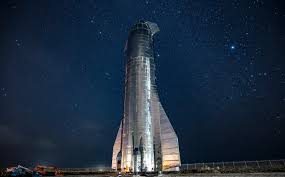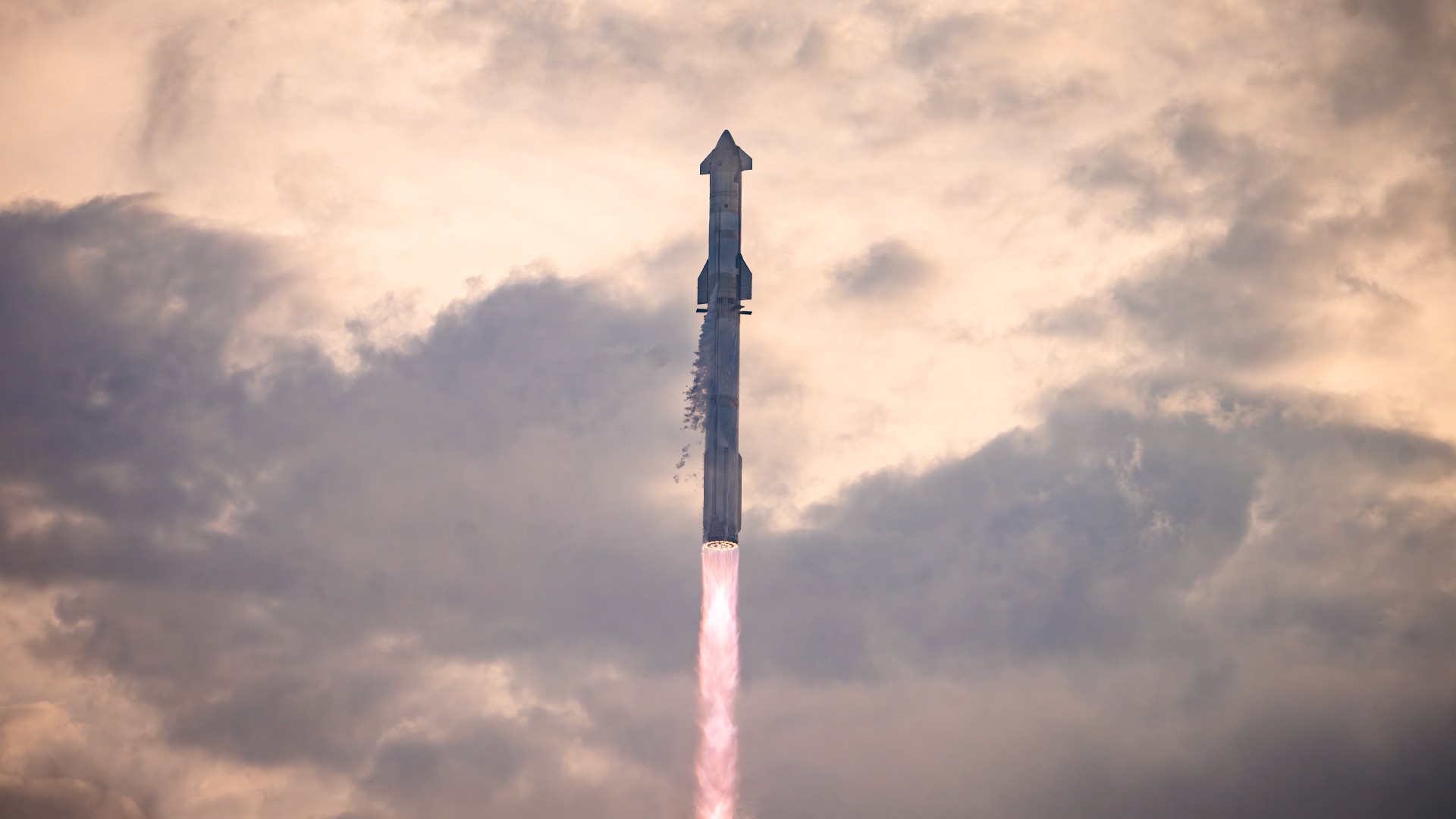SpaceX’s Starship Launch by Elon Musk Signals New Era in Space Exploration and Mars Colonization

SpaceX’s Starship Launch by Elon Musk Signals New Era in Space Exploration and Mars Colonization
In an event that will undoubtedly go down in history as one of the most significant moments in space exploration, Elon Musk and SpaceX have successfully launched the highly anticipated Starship spacecraft. This launch marks not only a major technological achievement but also signals the beginning of a new era in space exploration and the dream of Mars colonization. Musk, whose vision has always been centered around reducing the cost of space travel and making life multiplanetary, has taken a giant leap toward achieving these goals with the successful test of Starship.
SpaceX’s Starship is designed to be a fully reusable spacecraft capable of carrying both crew and cargo to destinations such as the Moon, Mars, and beyond. The spacecraft, which is the largest and most powerful rocket ever built, is integral to Musk’s broader vision of a future where humans are no longer limited to Earth but are instead exploring and colonizing other planets. With this launch, Musk’s dream of a permanent human presence on Mars, long seen as an audacious goal, is now one step closer to becoming a reality.
The Starship: A New Era of Spacecraft Technology
SpaceX’s Starship represents a leap forward in spacecraft technology. With a height of over 120 meters and a design aimed at full reusability, Starship is unlike anything ever built before. Unlike traditional rockets that are used once and discarded, Starship is designed to be reused multiple times, drastically reducing the cost of space launches. The spacecraft will be able to carry up to 100 passengers, making it capable of transporting humans to the Moon, Mars, and potentially other destinations within our solar system.
One of the most exciting features of Starship is its ability to transport a massive payload. With its enormous capacity, Starship is not just a vehicle for space tourists; it is also intended to transport the equipment, resources, and infrastructure necessary to support human colonization of Mars. This includes everything from habitats and life support systems to food production systems and energy supplies. Musk’s long-term vision is to use Starship as the workhorse for Mars colonization, a tool that will allow humanity to establish a permanent, self-sustaining presence on the Red Planet.
Starship’s first successful launch is a monumental achievement, not just for SpaceX, but for the space industry as a whole. The spacecraft has been in development for several years, undergoing numerous tests and iterations to reach this point. Musk has emphasized that the success of Starship will not only change the future of space exploration but also open up new opportunities for commercial space travel, scientific research, and resource extraction from other planets.
Mars Colonization: Musk’s Vision for the Future
Elon Musk’s passion for Mars colonization has been at the heart of his work with SpaceX. Musk has long argued that humanity’s future depends on becoming a multiplanetary species, with Mars serving as the ultimate backup plan in case of a catastrophe on Earth. Whether it’s a natural disaster, a global conflict, or environmental collapse, Musk believes that having a second home on another planet will ensure the long-term survival of humanity.
The successful launch of Starship brings Musk’s vision of Mars colonization closer to reality. Musk has outlined an ambitious plan for SpaceX to send humans to Mars as early as the mid-2020s, with the goal of establishing a self-sustaining colony on the planet. The first missions will likely focus on sending scientific teams and cargo to lay the groundwork for future human settlements. Over time, the colony would grow, with the eventual goal of having a thriving, multi-million-person city on Mars.
One of the key challenges of colonizing Mars is the ability to sustain life in such an inhospitable environment. Mars has a thin atmosphere, extremely cold temperatures, and no breathable oxygen. Therefore, any human settlement on the planet will need to be self-sufficient, producing its own food, water, and energy. Musk’s vision for Mars includes creating a closed-loop system where resources are recycled, and the colony can survive without relying on Earth for support. This vision of sustainability is central to the development of SpaceX’s technologies, including the use of solar energy, advanced life support systems, and in-situ resource utilization (ISRU) to extract water and fuel from the Martian environment.
Starship will play a central role in making this vision a reality. With its ability to carry large payloads, the spacecraft can transport everything needed to build a Mars colony, including habitats, energy systems, and agricultural infrastructure. Additionally, the reusability of Starship will allow for frequent and cost-effective travel to and from Mars, which is essential for maintaining a self-sustaining colony.
The Role of Starship in the Broader Space Economy
While the primary focus of SpaceX’s Starship is Mars colonization, the spacecraft will also play a crucial role in the broader space economy. Musk has long argued that reducing the cost of space travel is the key to unlocking new industries and opportunities in space. The reusability of Starship will significantly lower the cost per launch, making space more accessible for both government space agencies and private companies.
Starship’s capabilities go beyond Mars travel. It will be able to launch satellites, transport cargo to the International Space Station (ISS), and even carry out deep-space exploration missions. Starship’s versatility means that it could be used for a wide variety of purposes, from launching communications satellites to supporting lunar exploration missions under NASA’s Artemis program. The spacecraft could also be used for space tourism, offering passengers the chance to travel to low Earth orbit or beyond, with trips to the Moon and Mars on the horizon.
As the cost of space travel decreases, the potential for new industries in space grows. Companies are already exploring the possibilities of mining asteroids for valuable resources, manufacturing products in microgravity, and establishing space-based energy generation systems. Starship’s ability to transport large quantities of cargo and passengers to various destinations in space will make these ventures more feasible. The spacecraft could act as a key enabler for the growing space economy, creating opportunities for both private industry and scientific research.
The Road Ahead: Challenges and Opportunities
While the successful launch of Starship is a monumental achievement, it is only the beginning. There are still many challenges ahead on the road to Mars colonization and beyond. The next steps for SpaceX involve refining the spacecraft’s technology, including improving its propulsion systems, life support systems, and safety features. Starship will also need to undergo further testing to ensure its reliability and readiness for long-duration missions.
One of the biggest hurdles will be the development of the infrastructure needed to support a Mars colony. This includes building habitats, producing food and water, and establishing energy systems on the Martian surface. SpaceX’s Starship will play a critical role in delivering the equipment and resources needed to create a self-sustaining presence on Mars, but the logistical challenges of building such a complex system are immense.
Another significant challenge is the health and safety of the astronauts who will travel to Mars. The journey to Mars will take several months, and astronauts will face numerous risks, including radiation exposure, microgravity effects on the body, and the psychological challenges of isolation. SpaceX and NASA will need to develop solutions to mitigate these risks and ensure the well-being of the crew on such a long and difficult journey.
A New Era of Space Exploration
Elon Musk’s successful launch of SpaceX’s Starship has opened the door to a new era in space exploration. The spacecraft is not only a technological marvel but also a symbol of Musk’s ambitious vision for the future of humanity. The dream of sending humans to Mars and establishing a permanent colony on the Red Planet is now more achievable than ever before.
As SpaceX continues to refine Starship and work toward its goal of Mars colonization, the impact of this technology will be felt across the space industry. The advancements made in spacecraft technology, reusability, and sustainability will pave the way for new opportunities in space exploration, scientific research, and commercial ventures.
Musk’s vision for humanity’s future as a multiplanetary species is no longer a distant dream—it is rapidly becoming a reality. With the successful launch of Starship, SpaceX has taken a giant step toward making Mars colonization possible, and with it, the promise of a new era in space exploration. The journey to Mars may still be in its early stages, but thanks to SpaceX and Elon Musk, the path ahead is clear, and the stars have never seemed closer.








